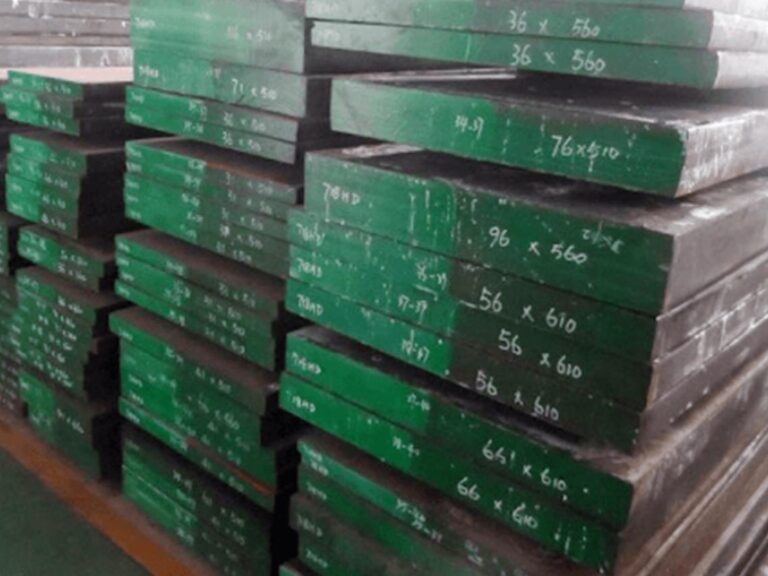Welcome to My Blog! 🌟
Before we dive into the content, I’d love for you to join me on my social media platforms. It’s where I share more insights, engage with our vibrant community, and post regular updates. Here’s how you can stay connected:
📘 Facebook: Connect with me on Facebook
Now, let’s embark on this journey together. I hope you find the content here insightful, engaging, and most importantly, valuable. Let’s explore, learn, and grow together! 🚀
Table of Contents
Introduction

In the world of construction, fabrication, and manufacturing, the importance of choosing the correct steel sheet sizes cannot be overstated. Steel sheets come in a wide array of dimensions and thicknesses, each suited for specific applications and industries. Whether you’re building structural components or crafting custom enclosures, knowing the right steel sheet sizes ensures material efficiency, cost-effectiveness, and structural integrity.
Understanding the variety of steel sheet sizes helps buyers, engineers, and DIY enthusiasts select the appropriate material for their projects. In this comprehensive guide, we’ll explore eight of the most commonly used steel sheet sizes, provide insights into their applications, and help you make informed decisions when purchasing or specifying materials.
Why Steel Sheet Sizes Matter in Projects
Steel sheet sizes influence more than just the fit of a component—they impact weight, durability, cost, and ease of fabrication. Selecting the wrong size can lead to unnecessary waste, increased expenses, or compromised structural performance. Furthermore, industries such as automotive, construction, HVAC, and metal fabrication rely heavily on standardized steel sheet sizes to streamline production and ensure compatibility with equipment and processes.
Overview of Standard Steel Sheet Sizes
The most common steel sheet sizes are typically measured in width, length, and gauge (thickness). While custom sizes can be manufactured to meet specific requirements, standard sizes remain popular due to their widespread availability, compatibility with fabrication machinery, and overall cost-efficiency. These standardized dimensions have been developed to suit a broad range of applications across industries like construction, automotive, HVAC, and industrial manufacturing.
Below are eight of the most recognized steel sheet sizes, each offering unique benefits depending on the intended use:
1. 36″ x 96″ (3′ x 8′)
This is a classic steel sheet size that is especially popular in HVAC ductwork, metal roofing, and paneling. The moderate size offers ease of handling while still covering a substantial surface area. It strikes a balance between manageability and coverage, making it ideal for both residential and light commercial applications. This size is also frequently stocked, which helps reduce lead times for urgent projects.
2. 36″ x 120″ (3′ x 10′)
Slightly longer than the 3′ x 8′, this steel sheet size is used when additional coverage is required without increasing the sheet’s width. It balances manageability with reach and is often seen in siding and cladding applications. This size reduces the number of vertical seams needed in vertical applications, improving aesthetics and durability against environmental elements.
3. 48″ x 96″ (4′ x 8′)
Arguably the most common steel sheet size, the 4′ x 8′ format is a staple in general fabrication and construction. Its dimensions are ideal for modular design and prefabrication, offering maximum utility with minimal waste. This size is highly compatible with standard sheet metal machinery such as shears, brakes, and laser cutters, making it a go-to choice for shops of all sizes.
4. 48″ x 120″ (4′ x 10′)
This size offers increased coverage for projects that need fewer joints or seams. It is frequently chosen for commercial construction, shelving units, and cabinetry due to its ability to span longer areas. Fewer joints translate to greater structural integrity and an improved visual finish, particularly in visible or high-traffic areas.
5. 60″ x 120″ (5′ x 10′)
A less common but highly useful size, especially in industrial applications requiring wide coverage such as tank fabrication or large-scale cladding. The additional width allows for fabrication of larger components without the need for welding multiple sheets together, which can save time and reduce weak points in the final product.
6. 48″ x 144″ (4′ x 12′)
The extended length of this size reduces the need for joins, which enhances aesthetic and structural continuity. It’s used in long-span applications, signage, and architectural features where a sleek, seamless look is desired. This format is also useful for creating longer panels in wall systems or enclosures.
7. 60″ x 144″ (5′ x 12′)
An oversized option for specialized applications, this size provides extensive coverage with minimal seams. While more difficult to transport and handle, it allows for efficiency in large industrial and architectural uses such as cladding for buildings or machine housings. Its broad surface area also makes it ideal for fabricating large tanks or agricultural equipment panels.
8. 72″ x 144″ (6′ x 12′)
This large-format steel sheet size is often used in projects that require minimal seams, such as heavy-duty equipment housing and large panels. Its massive coverage capacity significantly reduces installation time and material overlap, which is beneficial in both structural and aesthetic applications. Despite the handling challenges, its advantages in minimizing labor and improving end-product appearance are significant.
Steel Sheet Sizes Table for Quick Reference
| No. | Size (inches) | Size (feet) | Common Applications |
|---|---|---|---|
| 1 | 36″ x 96″ | 3′ x 8′ | HVAC, metal roofing, wall paneling |
| 2 | 36″ x 120″ | 3′ x 10′ | Siding, cladding, interior walls |
| 3 | 48″ x 96″ | 4′ x 8′ | General fabrication, construction |
| 4 | 48″ x 120″ | 4′ x 10′ | Commercial buildings, shelving |
| 5 | 60″ x 120″ | 5′ x 10′ | Tanks, large-scale cladding |
| 6 | 48″ x 144″ | 4′ x 12′ | Long-span panels, signage |
| 7 | 60″ x 144″ | 5′ x 12′ | Industrial applications, large structures |
| 8 | 72″ x 144″ | 6′ x 12′ | Equipment housing, oversized paneling |
Choosing the Right Steel Sheet Size for Your Project


When selecting steel sheet sizes, it’s important to consider the specific needs and constraints of your project. Here are key factors to keep in mind:
- Project Requirements: Evaluate the surface area you need to cover and the load-bearing or structural role the sheet will play. Thicker sheets may be necessary for structural integrity, while thinner sheets can suffice for paneling or enclosures.
- Handling and Transportation: Larger sheet sizes minimize the number of joints and seams, which can simplify installation and improve aesthetics. However, they may be more difficult to transport and maneuver on-site, especially in confined spaces.
- Fabrication Needs: Choose sheet dimensions that match the capabilities of your cutting, bending, and welding equipment. Standard sizes like 4′ x 8′ are highly compatible with most machinery, ensuring smoother fabrication.
- Waste Minimization: Selecting sheet sizes that align closely with your design specifications can help minimize offcuts and scrap material. This not only reduces waste but also contributes to cost savings over the course of your project.
- Consulting Professionals: For complex projects or when working with unconventional designs, it’s wise to consult with material suppliers or structural engineers. Their expertise can guide you to the most efficient and structurally sound choices.
Selecting an appropriate size ensures project efficiency, safety, and cost-effectiveness. Consulting with material suppliers or structural engineers can also help in making the best choice for unique requirements.
Common Industries Using Various Steel Sheet Sizes
Steel sheet sizes are used across numerous industries, each with unique requirements:
- Automotive: Primarily uses smaller and moderate-sized sheets for body panels, undercarriages, and structural frames. Precision and consistency are critical in this sector.
- Construction: Employs a wide range of sizes depending on the specific application—framing, siding, roofing, and structural elements. Larger sheets are often chosen for facade cladding and partition walls.
- HVAC: Prefers 36″ width sheets for ducting due to compatibility with standard ductwork systems. These sizes allow for streamlined assembly and reduced air leakage.
- Furniture Manufacturing: Uses moderate sizes like 4′ x 8′ for making desks, cabinets, shelving, and ergonomic fixtures. These sizes support both functionality and visual appeal.
- Agricultural Equipment: Leans toward larger formats such as 5′ x 12′ and 6′ x 12′ for fabricating chassis, housings, and panels on tractors and harvesters. These sizes help streamline production and improve durability.
Understanding how different industries utilize steel sheet sizes not only highlights their versatility but also underscores the importance of choosing the right dimension to meet industry-specific standards and functional goals.
Conclusion
Becoming familiar with the most common steel sheet sizes enhances decision-making for projects large and small. These sizes were developed based on practicality, ease of use, and cost-effectiveness, making them staples across numerous industries. Whether you are involved in a DIY project, large-scale fabrication, or commercial construction, selecting the right size will contribute significantly to the success of your work.
FAQ
What is the most common steel sheet size?
The 48″ x 96″ (4′ x 8′) sheet is the most widely used due to its balance of size and versatility.
Can I custom order steel sheet sizes?
Yes, many suppliers offer custom sizes, although they may come with higher costs and longer lead times.
How is steel sheet thickness measured?
Thickness is measured in gauges; the smaller the gauge number, the thicker the steel.
Do larger sheets always mean better value?
Not necessarily. Larger sheets reduce seams but can be harder to handle and may lead to more waste if not properly planned.
Are steel sheet sizes standardized globally?
While many sizes are common worldwide, regional standards may differ slightly. Always check local specifications.

